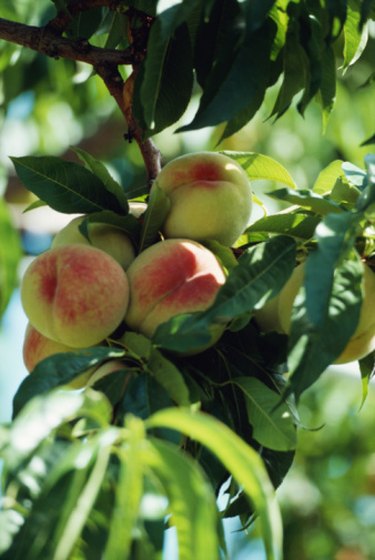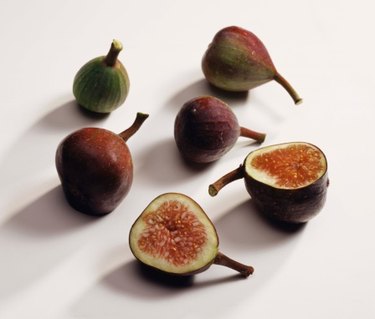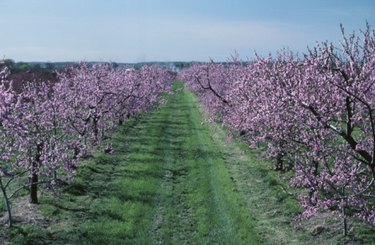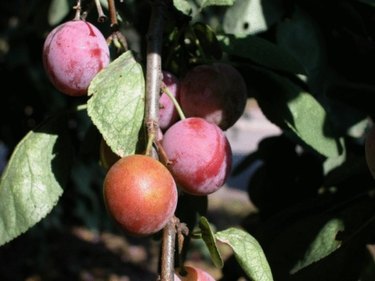
The relatively cool but mild winters and long, hot summers in Mississippi dictate which fruit tree crops grow best. Fruit trees grown anywhere in the Magnolia State need to be planted in a sunny location in a fertile, moist but well-drained soil. Because of the mild climate and high summertime humidity, various pests and diseases afflict common fruit trees that may not be as severe in Northern states.
Types
Video of the Day

Several temperate fruit tree species grow successfully in the state, according to the Mississippi State University Extension. Apples, pears, figs, peaches, nectarines, plums and, to a lesser extent, sour cherries and apricots. The limiting factors affecting fruit tree culture in Mississippi are the timing of late-winter and early-spring frosts as well as the duration of necessary temperatures below 45 degrees Fahrenheit in winter. A natural cold dormancy process called vernalization must occur for these fruit trees to produce flowers in springtime.
Video of the Day
The Extent of Winter Cold

Mississippi lies in U.S. Department of Agriculture plant hardiness zones 7 and 8, where average annual winter low temperatures drop into the 0 to 20 degree range. Depending on fruit tree species or cultivar, sufficient exposure to temperatures below 45 degrees must occur, otherwise flowering is inhibited or diminished. In northern counties, at least 1,000 hours of chilling occurs each winter, but only 200 to 500 hours occurs in southern Mississippi south of Hattiesburg close to the Gulf of Mexico. Plant the wrong fruit tree too far south and there is not enough cold to meet the tree's vernalization requirement.
Seasonal Phenology

Pears, Japanese plums and apricots are among the first fruit trees to bloom in very late winter or early spring in Mississippi. Late frosts can destroy open flowers and reduce fruit yields. Peaches, nectarines and sour cherries bloom next, followed by European plums and apples. Figs flower and bear in summer. Weather conditions vary year to year and affect precise harvest times. Peaches and nectarines start harvest in May, while apples are ready in late July and pears in early August. Individual fruit tree cultivar extends the harvest seasons later.
Local Insight
The varying soils, annual weather nuances and recent issues with fruit tree pests and diseases across Mississippi makes it difficult to select fruit trees. Contact your local cooperative extension office and speak to a horticultural agent who can make recommendations for fruit tree species. Some tree cultivars are better suited to the warmer winter areas of southern Mississippi compared to the colder northern counties where more temperate fruit tree species grow better.
- Mississippi State University Extension: Tree Fruit in Mississippi
- Mississippi State University Extension; Fruit and Nut Review Peaches, Nectarines, and Plums; John Braswell and R. Crofton Sloan
- Mississippi State University Extension; Fruit and Nut Review Apples and Pears; John Braswell and R. Crofton Sloan
- Mississippi State University Extension; Fruit and Nut Review Figs; John Braswell and Freddie Rasberry
- Mississippi State University Extension: Mississippi's Winter Chilling Information
- Pick Your Own.org: Typical Crop and Harvest Dates in Mississippi
- Mississippi State University Extension: Are Apricots Grown in Mississippi?
- Plant Maps: Interactive USDA Hardiness Zone Map for Mississippi
- Mississippi State University Extension: Area Horticulture Agents in Mississippi